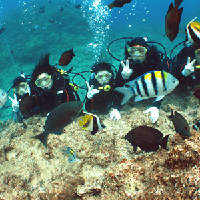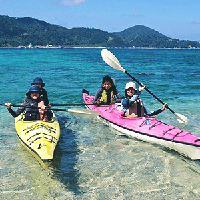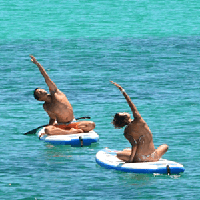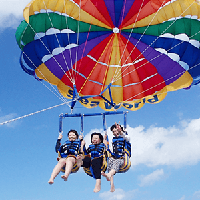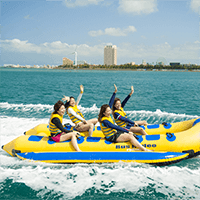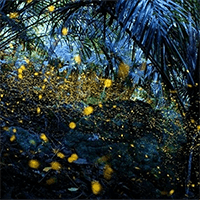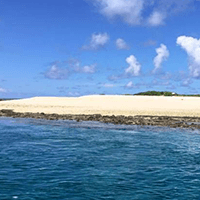Kansai in Sightseeing tour/Guided tour
- Age 0~Age 80
- Within 1 hour
- 13:20 / 13:50 / 14:20 / 14:50 / 15:20 / 15:50 / 16:20 / 16:50 / 17:20 / 17:50 / 18:20 / 18:50 / 19:20 / 19:50 / 20:20 / 20:50 / 21:20
Very popular!! The main course for sightseeing in Dotonbori! This is Osaka!! An elegant cruise down the Dotonbori River! This is a 20-minute course where you can see the Glico sign and the downtown area from the river. You are free to bring in your own food and drinks, so you can enjoy it in a cafe atmosphere!
20分のお手軽コースでしたが、とても楽しかったです。子ども連れで行きましたが、スタッフさんが親切で子どもにも優しく接してくださいました。 飲食可とあったので、たこ焼きを買って持ち込み、たこ焼きを食べながらの道頓堀クルーズという、大阪人のくせにコテコテの大阪観光を楽しみました。 見慣れた景色なのに船から見るとまた違った感覚があり新鮮でした。夕方の乗船にしたので夕暮れの難波の街をきれいに写真におさめることができました。 スタッフさんが一人同乗して、ちょっとした説明をしてくれたり、おなじみグリコの看板の前では一時停止してグループごとに写真を撮ってくれました。 子どもも大満足でした。
- Age 6~Age 75
- Within 1 hour
- 10:00 / 11:00 / 12:00 / 13:00 / 14:00 / 15:00 / 16:00 / 17:00 / 18:00 / 19:00
Each kanji character has a meaning, and the appearance of the font is considered beautiful, so ``kanji'' themselves are very popular among foreigners, who often wear T-shirts with large kanji prints on them. Many of you may have seen foreigners with Chinese characters or kanji tattoos on their bodies. The customer chooses such a kanji, and we will explain the calligraphy mindset, tools, and movements, so that they can deeply understand ``Hinomoto Calligraphy'' and write down the kanji they have chosen with a brush.
海外からの友人カップルをつれて体験させていただきました。自分の名前と好きな漢字を習うことができてとても良い旅の経験になりました!次は別の体験も合わせて楽しんでもらおうと思います〜ありがとうございました!
- Age 6~Age 100
- 1~2 hours
- 19:00
We will visit “Kobo Daishi aka Kukai” in Okunoin graveyard between early dinner and bedtime. Licensed guides who can speak English take you the enjoyable tour.You will see a mystical Okunoin which is totally different from the daytime.
- Age 6~Age 75
- Within 1 hour
- 10:00 / 11:00 / 12:00 / 13:00 / 14:00 / 15:00 / 16:00 / 17:00 / 18:00 / 19:00
The calligraphy of death is something that a samurai writes down with a brush as his last words in this world when he foresees his death. (Death refers to leaving this world) Customers can write their favorite kanji. You can select a character (kanji) and write it with an extra-large brush on SAMURAI paper (16 times the size of normal hanshi), which is made by combining two sheets of hanshi paper that is 8 times the size of normal hanshi paper. (Example) Yukimura Sanada's death note, ``If you go to live in an indefinite floating world, you will not know what will happen one day later.'' (In such an unstable world, we do not know what will happen tomorrow. Please think of Naniwa as something that doesn't exist in this world.'' Toyotomi Hideyoshi's deathbed writings, ``The dew falls, the dew falls and disappears.'' I wonder if Naniwa is also a dream within a dream (I became a citizen, but the dew fell and disappeared.) It was a life that seemed to disappear.)
今年の締めくくりとして、袴を着て、通常より16倍大きな半紙(サムライ半紙)に自身の好きな文字を豪快に記入できる書道をさせてもらいました!!! 声を出して、思い切って描く一文字に感動します!! 巻藁斬り体験もさせてもらい、スパッと切れる感覚が最高でした!!!メンズだと最高の空間でテンション爆上がりです!!!
- Age 6~Age 70
- 1~2 hours
- 11:00 / 14:00 / 17:00 / 20:00
Osaka no Jin ⚔ Pilgrimage to sacred places refers to the stages of battles such as the 1614 (Keicho 19) battle "Osaka Winter Jin" and the 1615 (Genna 1) restarted battle "Osaka Summer Jin" and other battles. It is to visit places connected to Osaka Castle as sacred places with “SAMURAI STYLE”. In addition, the term ``Japan's best soldier, who acted with great courage and speed'' in that battle was a name used to praise Sanada Nobushige (Yukimura), who was loyal to his lord, did not betray him even with money or territory, and was close to Tokugawa Ieyasu during the Summer Siege in Osaka. . Yukimura Sanada shined dazzlingly as a Sengoku military commander in the battle that concluded the Sengoku period. His vivid life still fascinates many people today, and let's make a pilgrimage to the sacred place of his glorious battle at Osaka, where he was praised as ``the greatest soldier in Japan.''
- Age 6~Age 70
- 1~2 hours
- 11:00 / 14:00 / 17:00 / 20:00
Osaka no Jin ⚔ Pilgrimage to sacred places refers to the stages of battles such as the 1614 (Keicho 19) battle "Osaka Winter Jin" and the 1615 (Genna 1) restarted battle "Osaka Summer Jin" and other battles. It is to visit places connected to Osaka Castle as sacred places with “SAMURAI STYLE”. In addition, the term ``Japan's best soldier, who acted with great courage and speed'' in that battle was a name used to praise Sanada Nobushige (Yukimura), who was loyal to his lord, did not betray him even with money or territory, and was close to Tokugawa Ieyasu during the Summer Siege in Osaka. . Yukimura Sanada shined dazzlingly as a Sengoku military commander in the battle that concluded the Sengoku period. His vivid life still fascinates many people today, and let's make a pilgrimage to the sacred place of his glorious battle at Osaka, where he was praised as ``the greatest soldier in Japan.''
- Age 6~Age 70
- 1~2 hours
- 11:00 / 14:00 / 17:00 / 20:00
This is a plan to commemorate and make a pilgrimage to the sad sacred place where SAMURAI and his friends were defeated in the Osaka Siege in the last war and fell to the castle, wearing armor and helmets reminiscent of the battle. ~ A famous castle that records the history of prosperity and turmoil of the people of Japan ~ This is how Osaka Castle is introduced on its official website. However, there was no trace of Osaka Castle, which boasted of being impregnable, as all of the moats other than the main castle and the moat that had been dug back during the peace of Ieyasu's plot at the Osaka Siege were filled in. The Tokugawa army destroyed the Sanada army and invaded the castle one after another, led by the Echizen army led by Matsudaira Tadanao, who was the first to arrive.The fire set by a Tokugawa army informer in the main castle kitchen quickly destroyed the castle tower. Osaka Castle finally fell at midnight on the 7th. When Hinomoto's greatest soldier, Nobushige, was a hostage of the Toyotomi family, he was liked by Toyotomi Hideyoshi, so he was treated more like a vassal than a hostage. The reason Yukimura sided with Toyotomi, who was at an overwhelming disadvantage at the Battle of Osaka, was to protect his loyalty to Hideyoshi. ``This Yukimura was summoned to a place where he was simply trying to prolong his life, and he was given honor as a samurai. This kindness cannot be replaced by land or money. ''When Ieyasu tried to persuade him to defect, he said, ``I have no intention of defecting even if I receive half of Japan.'' ``If you forget your debts and indulge in self-interest, can you call yourself a human being?'' he left behind the words of Hinomoto's greatest soldier.
- Age 6~Age 70
- 1~2 hours
- 11:00 / 14:00 / 17:00 / 20:00
Let's learn the bushido and experience the samurai spirit.What is the most important thing for a samurai? Wearing hakama, sandals, and a sword, and learning etiquette, manners, and kata. We call it the BUSHIDO sign.Next, as a BUSHIDO LEARN, you will experience the weight and sharpness of a real Japanese sword. We will learn the basics of swordsmanship (Battou and Nattou).We will take a break with SAMURAI TEA on the way. You will be entertained at a tea ceremony, as samurai risked their lives to "entertain" and "be entertained".Before participating in the final battle of the Warring States Period, the Battle of Osaka, the participants are asked to prepare for death and reflect on their own lives, writing their last words with a large brush on every piece of paper. This is called Deathbed calligraphy.At last, he puts on his armor and helmet to become a bushido master and goes to battle at the castle of Osaka to gain military merit in the battle of Osaka. However, when the defeat was imminent, the samurai, for the sake of honor, would not suffer the shame of the noose, even if they lost the battle, but would die by harakiri or cutting their belly before being captured.
- Age 6~Age 70
- 2~3 hours
- 11:00 / 14:00 / 17:00 / 20:00
Let's learn the bushido and experience the samurai spirit.What is the most important thing for a samurai? Wearing hakama, sandals, and a sword, and learning etiquette, manners, and kata. We call it the BUSHIDO sign.Next, as a BUSHIDO LEARN, you will experience the weight and sharpness of a real Japanese sword. We will learn the basics of swordsmanship (Battou and Nattou).We will take a break with SAMURAI TEA on the way. You will be entertained at a tea ceremony, as samurai risked their lives to "entertain" and "be entertained".Before participating in the final battle of the Warring States Period, the Battle of Osaka, the participants are asked to prepare for death and reflect on their own lives, writing their last words with a large brush on every piece of paper. This is called Deathbed calligraphy.At last, he puts on his armor and helmet to become a bushido master and goes to battle at the castle of Osaka to gain military merit in the battle of Osaka. However, when the defeat was imminent, the samurai, for the sake of honor, would not suffer the shame of the noose, even if they lost the battle, but would die by harakiri or cutting their belly before being captured.
- Age 3~Age 100
- 1 Day or more
- 18:00
Nogawa Nature School will advance to Kansai. This tour will be hosted by Ryo from the Tokyo school and staff member Muro from Kyoto. Meet at Kyoto Station, and reserve a business hotel for each person. This is a car-only trip to the river. The next day, we will depart at 7:00 and search for Japanese pond turtles in the Lake Biwa water system. The main focus of the Kyoto tour is observing the giant salamander, a natural monument. In addition, we will guide you to several points in Kyoto and capture aquatic insects, amphibians, red-bellied newts, and river crabs. The main tour is at night, but the next day, we will search for Japanese pond turtles by rummaging around the Lake Biwa water system from the morning. We look forward to your participation.
最近チェックしたプラン
Please wait a moment
![[Osaka Dotonbori] adult care! Specialty cruise! ! A 20-minute course for easy ridingの画像](https://img.activityjapan.com/10/33179/10000003317901_SoqQrvhg_3.jpeg?version=1713256985)
![[By Osaka Castle] Learning Zen of Japanese Beauty Calligraphy in kimonoの画像](https://img.activityjapan.com/10/52954/10000005295401_0NLp2Urf_3.jpeg?version=1735455605)
![[Koyasan] Okunoin Night Tour .Explore History,Legends,and Nature!の画像](https://img.activityjapan.com/10/32411/10000003241101_a3rPqL1p_3.jpg?version=1626415204)
![[Osaka castle] Learning Bushido & Zen at Samurai Calligraphy in kimonoの画像](https://img.activityjapan.com/10/52953/10000005295301_0NLp2Urf_3.jpg?version=1735455906)
![[Osaka/Tamatsukuri] Osaka no Jin "Hinomoto's No. 1 Soldier" pilgrimage tour guide (Tamatsukuri area)の画像](https://img.activityjapan.com/10/52625/10000005262501_xEnFGyJR_3.jpg?version=1706264164)
![[Osaka/Tennoji] Osaka no Jin "Hinomoto's No. 1 Soldier" pilgrimage tour guide (Tennoji area)の画像](https://img.activityjapan.com/10/52569/10000005256901_xEnFGyJR_3.jpg?version=1706258885)
![[Osaka/Osaka Castle] Pilgrimage tour guide to the sacred sites of famous castles that mark the history of prosperity and turmoil among the people of Japan (Osaka Castle area)の画像](https://img.activityjapan.com/10/52567/10000005256701_xEnFGyJR_3.jpg?version=1735524365)
![[By Osaka Castle] Hands-on class to learn Bushido & Zen with photoの画像](https://img.activityjapan.com/10/52543/10000005254301_yvTwbz4o_3.jpg?version=1735524126)
![[OsakaCastle] Hands-on class to learn Bushido/Harakiri & Zen with photoの画像](https://img.activityjapan.com/10/52660/10000005266001_lpXgdgDW_3.jpg?version=1735456203)
![[Meet at Kyoto Station in Kyoto] Natural Monuments, Giant Salamander Observation Tour, Search for Newts and Swamp Crabの画像](https://img.activityjapan.com/10/55285/10000005528501_1IgGyMt8_3.png?version=1720404501)

